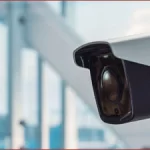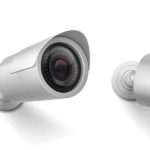Many people who have never worked with or around alarm systems find them perplexing. This perplexity may come from misunderstandings regarding alarm systems based on what has been seen on television. From the use of older systems that lack the speed and sophistication of today’s systems. Regardless of the source of the misunderstanding, it is critical for anybody working with it. Contemplating purchasing an alarm system to understand how they operate and which one best suits each application.
Types of Alarm Systems
When choosing an alarm system to safeguard your home or company, you have a few alternatives. When making your selection, make sure to consider your alternatives and choose an alarm system with features that meet your specific requirements. There are four types of alarm systems to consider in general.
Wireless Alarm Systems
The wireless alarm system sensors use a secure radiofrequency to connect with the control panel. When a sensor is tripped when the alarm activates, it sends a signal to the control panel, which activates the alarm. To communicate successfully, all sensors and control panels must be within range of one another. The signal will not reach its intended target if your sensors are too far away from the control panel or if there are too many obstructions in the path. Wireless alarm systems are the easiest to set up since there are no wires to run. Although professional installation is always recommended, most wireless systems may be deployed without assistance.
Wired Alarm System
Wired alarm systems, as the name indicates, are hard-wired into your building. Every sensor, control panel, and detector connect via physical wires. Every system component is also wired into your home’s power supply. Because you never have to worry about sensor connection or batteries running out, wired solutions usually considered trustworthy.
Installing wired alarm systems might be difficult. Unless you’re okay with wires running down your ceilings and walls, walls must pull down to install the system properly. A more difficult installation generally comes at a higher cost.
It’s a widespread misunderstanding that wired alarm systems lack the same flexibility and mobility as wireless alarm systems. Many current wired systems provide the same level of remote access as wireless systems.
Monitored Alarm System
When an alert activates, who gets notified? An alert sent immediately to a professional alarm monitoring staff with a monitored alarm system, who can respond quickly to any threat. If there’s a break-in, they’ll call the cops. If there is a fire, the fire department will alert. A monitoring company will also know how to deal with false alarms. It’s like having a smart alarm system that reacts differently depending on what caused the alarm to go off.
Alert systems monitor to ensure that your property is safe even if you are away at home or cannot check for alarm messages on your phone. They offer unparalleled peace of mind.
Unmonitored Alarm System
Unmonitored alarm systems only activate aural and visual signals to notify someone in the immediate neighborhood, rather than transmitting an alert to a professional security team that can respond to threats. It’s then up to you or your neighbors to decide how to respond. Some unmonitored alarm systems can send you a text, email, or notice to your mobile device, but it’s still up to you to deal with the threat.
Unmonitored alarm systems provide far less protection than monitored alarm systems since no security personnel monitor your home, but they are typically less expensive.
Difference between different Alarm systems
Intrusion Detection Systems (IDS) is the most popular alarm systems utilized in government and commercial buildings. These systems are made up of various components and virtually usually completely adaptable to the needs of each application. There are systems meant to defend individual residences and much smaller enterprises and complex systems for government and commercial usage. There are a few distinctions between the two systems, the first of which is the number and type of sensors utilized. The second distinction is in the manner in which alarms receive and who receives them. Finally, the overall cost of a system differs significantly between smaller and larger home systems and bigger industrial systems. Despite their variations, both systems contain some of the same basic components and work similarly.
Components of the intruder alarm system
1. Control Panel
A user control panel includes with every alarm system. Depending on the system, this panel may only be a keypad for arming and disarming the system. It may also enable administrators to add new users and check the status of alarm stations. This panel will effectively function as the central computer for smaller home usage systems, sending and receiving status information and communicating with the monitoring agency. Because most inputs and monitoring done from a central monitoring station. The control panel will have relatively limited capability for bigger systems utilized in most industrial applications.
2. Base module
Base and extension modules are two items that larger industrial alarm systems will have but smaller residential alarm systems will not. The base module is a big circuit board that powers and communicates with all of the alarm stations from a single place. In a power outage, the base module also enables battery backup power to give to the entire system. Expansion modules utilize when the number of alarm points exceeds the capacity of the base module. For over a decade, Adventure has been installing alarms at various Department of Defense installations. Its basic modules could handle up to fifteen alarm points, with each extension module adding another fifteen sensors.
3. Sensors
Both residential and business alarm systems will install their alarm points once the control panel and base modules installed. Most home security systems rely on some sort of sensor that only alerts when there is movement; however, some will also incorporate door alarms. These sensors might be infrared or microwave, and they will both respond to movement and changes in heat signatures. The sensitivity of most of these sensors may adjust, allowing the user to only get warnings for particular speeds and sizes of movement. The norm for most government applications is that an alarm will sound whenever someone moves through an area in thirty-inch steps. Microwave and infrared sensors in commercial and government alarm systems and sensors on doors, windows, fences, and even underground.
Types of sensors
Sensors on doors usually balanced magnetic sensors or BMS. A magnet in one half of the sensor ‘balances’ a metal ball in the other section of the sensor in a BMS. The device will trigger an alert if the two parts move more than 3/8 of an inch apart. Indicating that the perimeter has a breach. The balanced magnetic sensors may change depending on where they mount on the door.
The further they are from the hinge, the faster they will cause an alarm to go off. Seismic sensors used to monitor windows, fences, and even the ground. Seismic sensors detect shocks on the surface on which attach themselves. When a large amount of motion detected on the surface, they will activate alarms on fences and windows. The alarm triggers depending on ground movement if it is put underground.
If desired, the sensitivity of quality sensors can modify only to warn when large movements occur.
Conclusion
In conclusion, because your property is one-of-a-kind, it necessitates a one-of-a-kind security solution. Make sure that the alarm system you choose for your house or company is appropriate for your location. Before making a final selection, weigh the advantages and disadvantages of each type of alarm system. So, whatever application a person chooses to utilize an alarm system for, there is almost certainly a system on the market that will meet their requirements. Many systems are now relatively affordable with recent technological advancements. With some do-it-yourself systems available for purchase in many home electronics and home improvement stores.


 Dome CCTV Cameras
Dome CCTV Cameras Bullet CCTV Cameras
Bullet CCTV Cameras Day & Night CCTV Cameras
Day & Night CCTV Cameras C-Mount CCTV Cameras
C-Mount CCTV Cameras


